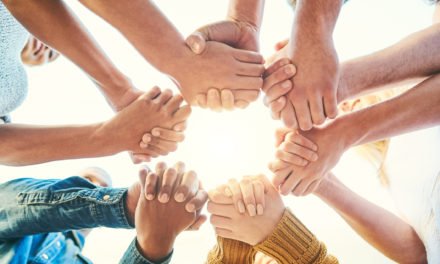
One does not have to look any further than the last month [or perhaps even the last week], for instances, events, ‘tweets,’ that suggest we are not having the conversations necessary to continue to create an inclusive, equitable world (or that we need to have more of them). Certainly, policy is important to equity, resistance is a critical aspect of moving the needle forward, and an overall systems approach is necessary…AND, we also know that there is immense opportunity in shifting culture and systems by shifting the perspectives and changing the hearts of people, and empowering others to share and own their truth. All of this requires conversations, creating brave spaces for dialogue. It requires decentering, and sometimes, even, prioritizing the psychological safety of those most impacted.
In honor of The Winters Group team preparing for our Inaugural Bold, Inclusive Conversations™ Certification Program (#YAASSS), we’ve included a passage from Mary-Frances Winters’ We Can’t Talk About That At Work!, an example of how an organization took steps towards making equity ‘real,’ by creating spaces for Bold, Inclusive Conversations™:
“I was invited to facilitate a two-hour session with the African-American employee affinity group to discuss the stress that the killing of unarmed black men was causing among its members. The purpose of the meeting was two-fold: share feelings; and develop skills to effectively discuss these topics. Initially, the thought was to invite senior leaders who could hear the frustration and concern among the
African-American employees.
However, we decided that the first session might be more effective if it was confined to the affinity group members. This approach allowed for a more open dialogue than might have been achieved if the session had been open to leaders. The employees of this organization are quite dispersed, and while a number had independently shared their frustrations with the leader of the affinity group, there had not been an opportunity for members to hear from each other.
During this first session, it became apparent that there was a need for another session with just the African American employee affinity group because we were only able to accomplish the first objective of sharing feelings. I realized that the emotions were still so raw that it would not be prudent to try to work on the skill-building portion of the agenda.
During the second session, a recommendation surfaced to hold a third gathering that would include other employee network groups (e.g., Latino, Asian, LGBTQ), as well as members of the Diversity Council. This particular diversity council is comprised of some senior leaders in the organization. The purpose of the combined session was to be more inclusive and explore other issues that might be causing stress for these groups. (e.g., fear of being deported; Islamophobia concerns)…This was a meaningful dialogue where in which we were able to talk about specific skills such as meeting people where they are (e.g., using the Intercultural Development Continuum model to assess the level of competency); managing emotions, using “I” statements; and listening.”


















